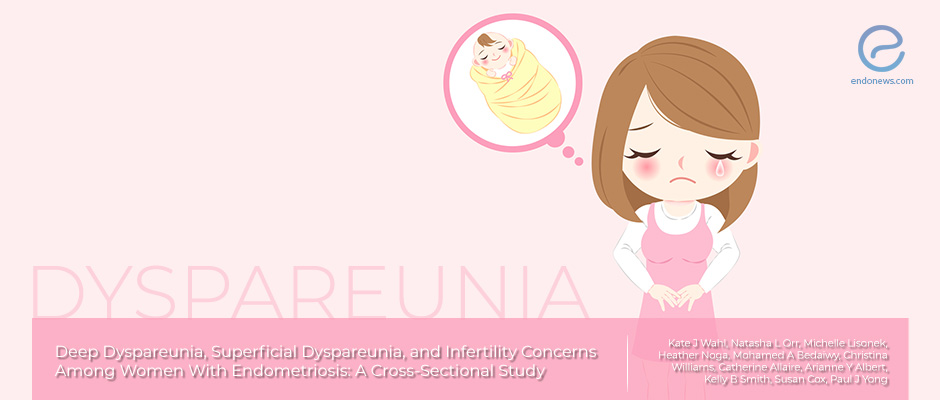The Relationship Between Dyspareunia and Infertility in Endometriosis
Apr 3, 2020
Superficial dyspareunia is significantly associated with infertility
Key Points
Highlights:
- Superficial dyspareunia is strongly associated with infertility in endometriosis, regardless of all demographic data, reproductive history, conceiving history and other factors.
Importance:
- Endometriosis is associated with difficulties in conceiving, and future fertility is an important cause for concern among women who are diagnosed with this condition.
- Pain may be a factor in infertility when intercourse is difficult due to superficial dyspareunia, or deep dyspareunia causing sustain intercourse.
- Affected individuals may even avoid sexual stimuli.
What's done here:
- This is a cross-sectional study conducted at a University-based tertiary center for endometriosis.
- The relationship between dyspareunia and infertility was evaluated in endometriosis patients.
- Superficial dyspareunia makes intercourse difficult to achieve; deep dyspareunia makes intercourse difficult to sustain and sometimes causes affected individuals to avoid sexual stimuli.
Key results:
- Increased severity of superficial dyspareunia is associated with infertility concerns, but increased severity of deep dyspareunia was not.
- Endometriosis patients with self-reported previous conceiving difficulties have significantly higher superficial dyspareunia than those who reported no difficulties.
- The endometriosis patient group who had never tried to conceive had the highest average superficial dyspareunia.
- Adjusting for other variables in a multivariable model, superficial dyspareunia, nulliparity, difficulties trying to conceive, and younger age remained significantly related to infertility concerns.
Limitations:
- Biophysiocosocial tests and qualitative exploration of the psychology of women with endometriosis about their future reproductivity could be added to investigated factors.
Lay Summary
Wahl et al. from the Center of Pelvic Pain and Endometriosis British Columbia Women's Hospital, Vancouver, Canada studied with endometriotic patients suffering from dyspareunia who were referred to their center and built a cross-sectional study to investigate the relations between dyspareunia symptoms with infertility. Their results were published recently in "Sexual Medicine".
The authors hypothesized that both deep dyspareunia and superficial dyspareunia would be independently associated with infertility concerns among women with endometriosis.
However, only superficial dyspareunia found to be significantly related to infertility concerns in bivariate analyses. Further adjusting for other variables in a multivariable model, superficial dyspareunia, currently trying to conceive, nulliparity, previous difficulties trying to conceive, and younger age remained significantly related to infertility concerns.
Superficial dyspareunia makes intercourse difficult to achieve; deep dyspareunia makes intercourse difficult to sustain and sometimes causes affected individuals to avoid sexual stimuli.
For the study, endometriosis patients filled a baseline questionnaire form online that shows their data within EPPIC (endometriosis pelvic pain interdisciplinary cohort) including EHP-30 (endometriosis health profile-30).
The result of this study would help to understand the infertility concerns of women with endometriosis, especially those experiencing superficial dyspareunia. "Clinically, the results serve as a reminder that potential infertility may produce worry among some women with endometriosis, even for those who have not yet tried to become pregnant and perhaps particularly for those experiencing superficial dyspareunia", the authors concluded.
Research Source: https://pubmed.ncbi.nlm.nih.gov/32061579/?from_term=endometriosis&from_sort=date&from_page=4&from_pos=3
deep dyspareunia superficial dyspareunia infertility fertility psychological distress endometriosis pelvic pain interdisciplinary cohort (EPPIC) endometriosis health profile-30 (EHP-30) endometriosis.

